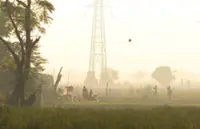PETALING JAYA: Air quality is unhealthy in 19 areas in seven states as of 5pm on Sunday (Oct 8).
The Malaysian Air Pollution Index Management System (APIMS) website showed that the Nilai, Negri Sembilan recorded the highest IPU with a reading of 162.
Already a subscriber? Log in
Save 30% OFF The Star Digital Access
Cancel anytime. Ad-free. Unlimited access with perks.





